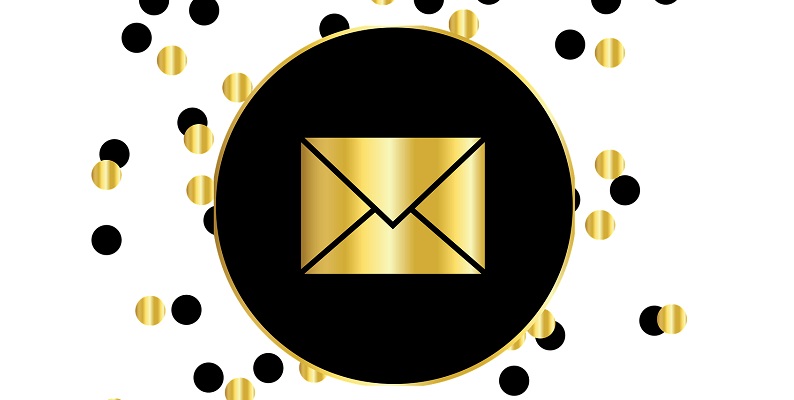Email newsletters are a powerful tool for businesses to communicate with their audience, build relationships, and drive conversions. However, to ensure your email newsletters are effective in achieving these goals, it’s important to have a solid plan for their design. One crucial aspect of this plan is building the HTML structure of your newsletter. Let’s dive into how you can create a well-structured HTML framework for your email newsletters.
Specifying Character Encoding, Viewport Meta Tag, and Title
Within the section of your HTML, there are a few key elements you need to include. First, specify the character encoding using the “charset” attribute. This ensures that your newsletter’s text will be displayed correctly across different email clients and devices. Next, set a viewport meta tag to make your newsletter responsive on mobile devices. This is essential as more and more people access their emails on smartphones and tablets. Lastly, add a title that accurately represents the content of your newsletter. This will be displayed in the email client’s interface, helping recipients identify your newsletter among others in their inbox.
Using inline CSS for font styles, sizes, and colors
Unlike traditional web pages, email newsletters require a different approach to styling. Instead of external style sheets, it’s best to use inline CSS to set font styles, sizes, and colors. This is because some email clients strip out external stylesheets, rendering your newsletter with default styles. By using inline CSS, you have better control over the visual presentation of your email newsletter across different platforms. Make sure to test your newsletter on various devices and email clients to ensure consistency.
Choosing web-safe fonts for consistent rendering
While it may be tempting to use fancy fonts in your email newsletters, it’s important to remember that not all fonts are supported across different email clients. To ensure consistent rendering, it’s best to choose web-safe fonts that are widely supported. These fonts are common and installed on most devices, reducing the chances of your newsletter displaying incorrectly. Popular web-safe fonts include Arial, Helvetica, Times New Roman, and Verdana. Stick to these safe options to ensure your newsletters look great regardless of where they are viewed.
Incorporating Engaging Content in Your Email Newsletter Design
While the aesthetics of your email newsletter are important, it’s equally vital to focus on adding engaging content. After all, the purpose of your newsletter is to inform and captivate your audience. To achieve this, make sure to provide valuable and relevant information, such as industry insights, tips, or exclusive offers. The content should be concise, easy to understand, and tailored to meet the needs of your target audience. Keep in mind the tone and voice of your brand, ensuring consistency across all communication channels.
Using Short Paragraphs and Subheadings to Make Text Scannable
Reading long blocks of text can be overwhelming for recipients, leading to decreased engagement and potential unsubscribes. To make your email newsletter more scannable, break up your content into short paragraphs. This allows readers to digest information quickly and easily. Additionally, using relevant and descriptive subheadings can help readers navigate your newsletter and find the sections that are most interesting to them. Subheadings also provide a visual break in the email, making it visually appealing and easier to read.
Enhancing Your Message with Relevant and Visually Appealing Images or Graphics
Visual elements play a crucial role in the design of an email newsletter. They can enhance your message, capture attention, and create a more immersive experience for readers. Incorporate relevant and visually appealing images or graphics that complement your content. Whether it’s product images, infographics, or illustrations, make sure they are high-quality and optimized for email delivery. Be mindful of file size to avoid slow-loading newsletters that can drive subscribers away.
Creating clear, concise, and direct CTAs to persuade readers to take action
Call-to-action (CTA) buttons are an essential component of any email newsletter design. They guide readers towards the desired action, whether it’s making a purchase, signing up for an event, or downloading a resource. To create effective CTAs, keep them clear, concise, and direct. Use action verbs and enticing language that encourages readers to take immediate action. Ensure CTAs stand out from the rest of the content by using contrasting colors or surrounding them with white space. Test different button designs and placements to determine what works best for your audience.
Providing valuable and relevant information to keep subscribers engaged
One of the primary reasons people subscribe to newsletters is to receive valuable and relevant information. Make sure you deliver on this expectation by providing content that educates, entertains, or solves a problem for your subscribers. Tailor your content to match the interests and needs of your audience. Whether it’s industry updates, insider tips, case studies, or exclusive offers, your subscribers should feel excited to open and read your newsletters. Consistently delivering value will help you build trust and loyalty among your subscribers.
Tracking and Analyzing the Performance of Your Email Newsletters
To truly understand the effectiveness of your email newsletters and make informed decisions about future campaigns, tracking and analyzing their performance is crucial. Use email analytics tools to measure open rates, click-through rates, conversion rates, and other relevant metrics. By doing so, you can gain insights into which types of content resonate most with your audience, how different design elements impact engagement, and which calls-to-action drive the most conversions. Use these insights to optimize your future email newsletters and continuously improve their performance.
In conclusion, building a well-structured HTML framework for your email newsletter design is essential for creating visually appealing and engaging newsletters that drive results. Pay attention to technical aspects such as character encoding and viewport meta tags, use inline CSS for styling, choose web-safe fonts, and incorporate engaging content, images, and CTAs. Provide valuable information to your subscribers and track the performance of your newsletters to continuously improve your email marketing efforts. With these best practices in mind, you’ll be well-equipped to create effective and successful email newsletters.

